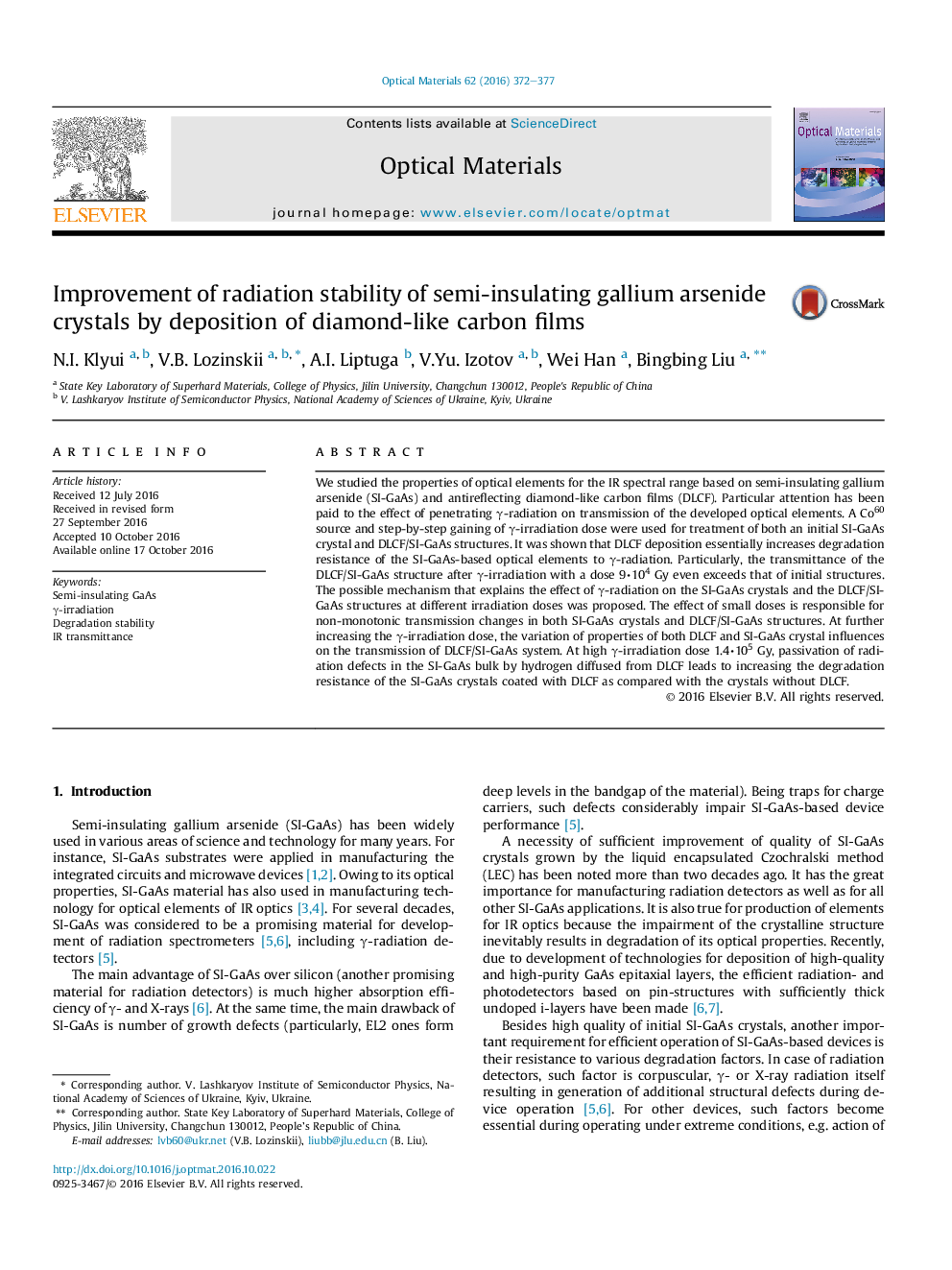| Article ID | Journal | Published Year | Pages | File Type |
|---|---|---|---|---|
| 5443053 | Optical Materials | 2016 | 6 Pages |
Abstract
We studied the properties of optical elements for the IR spectral range based on semi-insulating gallium arsenide (SI-GaAs) and antireflecting diamond-like carbon films (DLCF). Particular attention has been paid to the effect of penetrating γ-radiation on transmission of the developed optical elements. A Co60 source and step-by-step gaining of γ-irradiation dose were used for treatment of both an initial SI-GaAs crystal and DLCF/SI-GaAs structures. It was shown that DLCF deposition essentially increases degradation resistance of the SI-GaAs-based optical elements to γ-radiation. Particularly, the transmittance of the DLCF/SI-GaAs structure after γ-irradiation with a dose 9â
104 Gy even exceeds that of initial structures. The possible mechanism that explains the effect of γ-radiation on the SI-GaAs crystals and the DLCF/SI-GaAs structures at different irradiation doses was proposed. The effect of small doses is responsible for non-monotonic transmission changes in both SI-GaAs crystals and DLCF/SI-GaAs structures. At further increasing the γ-irradiation dose, the variation of properties of both DLCF and SI-GaAs crystal influences on the transmission of DLCF/SI-GaAs system. At high γ-irradiation dose 1.4â
105Â Gy, passivation of radiation defects in the SI-GaAs bulk by hydrogen diffused from DLCF leads to increasing the degradation resistance of the SI-GaAs crystals coated with DLCF as compared with the crystals without DLCF.
Related Topics
Physical Sciences and Engineering
Materials Science
Ceramics and Composites
Authors
N.I. Klyui, V.B. Lozinskii, A.I. Liptuga, V.Yu. Izotov, Wei Han, Bingbing Liu,
